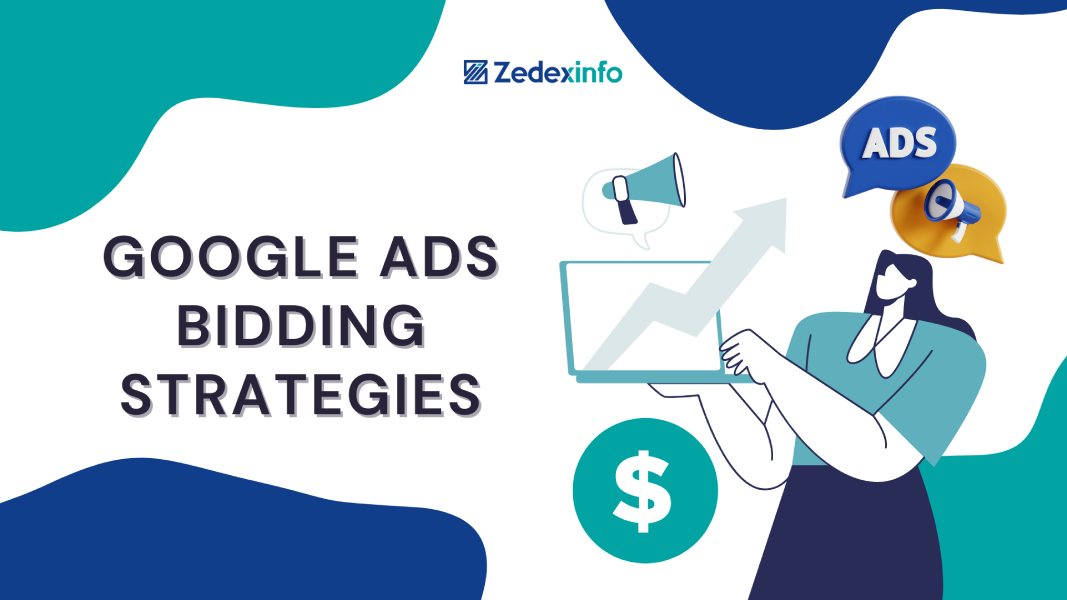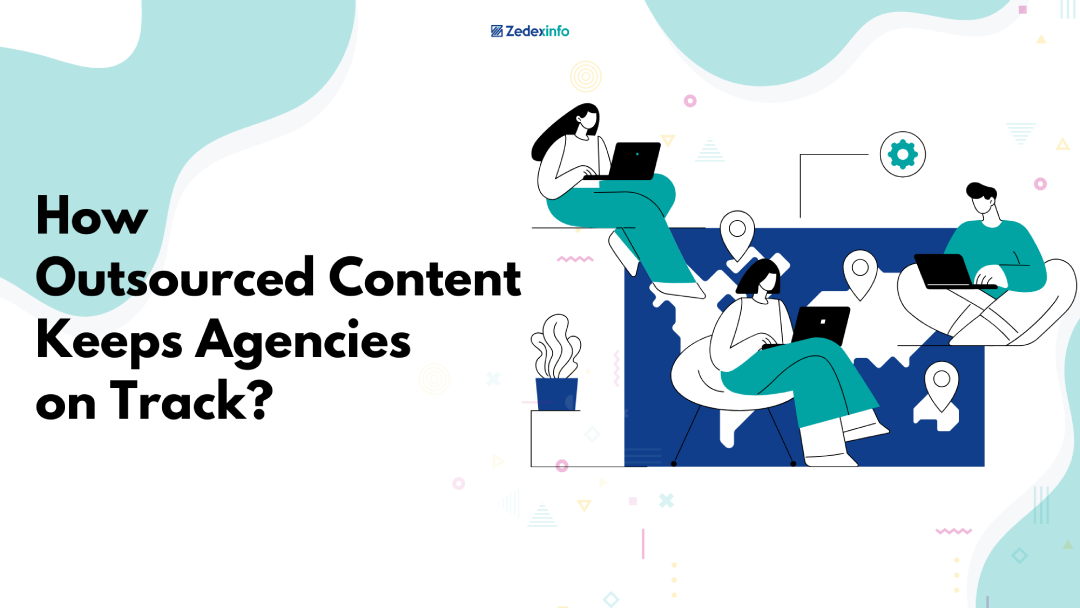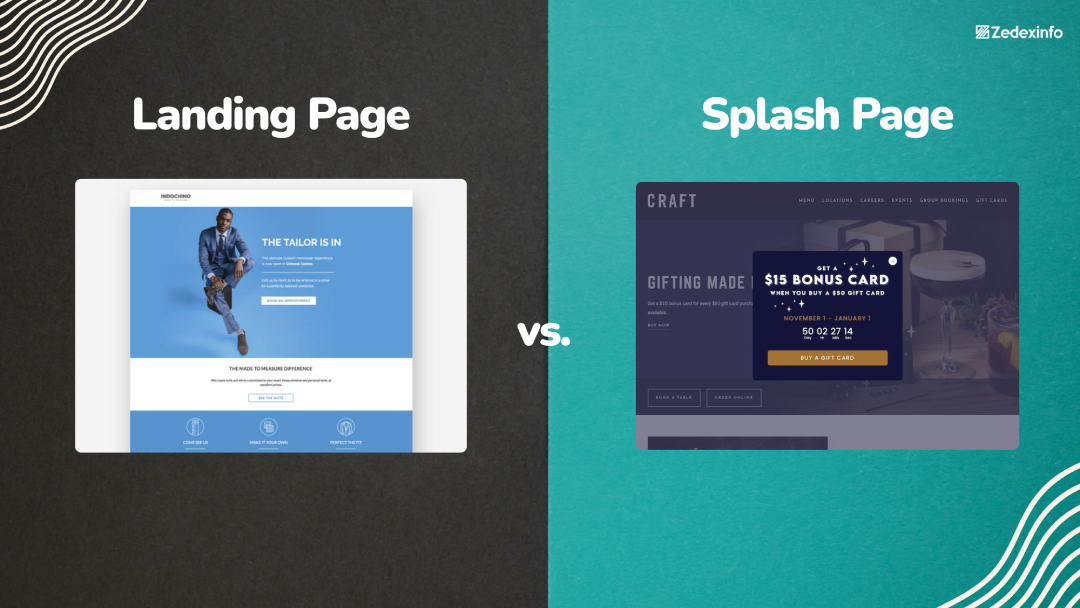In the world of Google ads, every click matters, and your bid can make or break your campaign’s success. Google Ads is an important strategy that allows businesses to reach their target audience and boost sales without SEO efforts. Bidding is the most crucial part of Google ads that can either skyrocket your business or waste your entire budget. Bidding is the amount you are willing to spend per click for an ad, which ultimately decides its placement and visibility. Google Ads bidding strategies are the backbone of optimizing ad spend and achieving marketing goals.
Choosing the right bidding strategy is key to boosting brand awareness, traffic, or sales. The right bidding strategy helps you make the most out of your ad budget and can drive your costs down. However, Google Ads’ bidding strategies are complex. Every time you launch a campaign, Google asks what type of bidding you want to use. Therefore, it’s important to understand the Google ads bidding strategies in detail and use them to your advantage.
In this blog, we are going to share a complete guide on Google Ads bidding strategies to help you place the right bid and maximize conversions. We will break down each strategy, explaining what it is and when to use it.
Manual Cost-per-Click (CPC) Bidding:
Manual CPC bidding allows advertisers to set a maximum CPC for each keyword or ad group, providing a high level of control. With this approach, you can simply specify how much the maximum amount you are willing to pay for a click for each keyword or ad placement. If a specific keyword brings more conversions, you can increase its budget and remove bids for underperforming keywords. The biggest advantage of Manual CPC bidding is granular control over bids. You have direct control over your ad spending and, therefore, can manage your campaigns effectively and efficiently.
When to Use:
Manual CPC should be used when you want to control costs for individual keywords and need tight control over budgets. It is best to use manual CPC bidding for new Google accounts to perform AB testing and find a CPC bid that gives you the best return. However, this strategy is best employed by advertisers who are familiar with keyword selection, identifying high-potential keywords, and understanding market competition. Apart from that, you should also know how to monitor and adjust bids manually.
Enhanced CPC (ECPC) Bidding:
Enhanced CPC bidding combines manual CPC with automated adjustments to increase the chances of conversions while staying within the budget. It involves adjusting the manual bids using smart strategies for each auction to turn leads into conversions. You just have to set the maximum CPC bid limit, and Google will decide how to spend it on high-converting leads. An important thing about this strategy is your average CPC can sometimes exceed the maximum bid set for high-potential opportunities that can bring conversions.
When to Use:
Enhanced CPC is ideal when you want to improve conversion rates while maintaining some level of manual control. The bid amount per click increases or decreases depending on the likelihood of the lead turning into conversion. This adaptive approach helps you reach more people and increases CTR, which helps with SEO performance and rankings. This strategy is best for e-commerce websites whose sole purpose is maximizing conversions. So, it should be used to test automaton with some manual control.
Maximize Clicks:
Maximize Clicks is an automated Google ads bidding strategy that allows advertisers to drive as many clicks as possible within the budget. In this strategy, Google ads automatically set your bids per click to attract the highest possible clicks within the daily average budget you set. More traffic increases your website’s rankings, which ultimately helps in brand awareness. However, this strategy also has a negative side: It does not consider the quality or relevance of the clicks, which means fewer conversions.
When to Use:
Maximize clicks should be used when your sole purpose is increasing traffic and boosting brand awareness. It is an effective strategy if your goal is to tap into new markets or generate a larger volume of visitors without focusing on conversions. However, this strategy is not ideal for sales and conversions, as the quality of traffic may not always be relevant. If your website already has good conversions and you just want to reach a new audience, it is the right strategy.
Maximize Conversions:
Maximize conversions is an automated bidding strategy that involves driving as many conversions as possible within the budget. In this, you set a daily budget, and Google ads use that budget to bring maximum conversions using machine learning. The higher the daily budget, the more conversions you can expect. The CPA does not matter in this strategy, as the main aim is to bring conversions within the budget. Google’s algorithms target individuals who are most likely to convert, optimizing ad delivery for maximum effectiveness. Sometimes, the budget can exceed the daily budget when there are high potential clients for conversion.
When to use:
Maximize conversions should be used when your sole purpose is to maximize leads and conversions. For using this, you should have a fixed daily budget and increasing volume should be more important than cost-efficiency. It is a perfect choice when you want to spend your entire budget only on conversions and don’t want to pay just for clicks. It can only be used for campaigns with strong historical data to let Google know the target audience and conversion types. The daily budget should be reasonable enough to allow Google to bid properly and meet your campaign goals.
Target Cost-per-Action (CPA) Bidding:
Target CPA bidding is a strategy that allows advertisers to optimize bids to achieve a specified cost per conversion. With this approach, you set a target CPA, which is the average amount you are willing to pay for a specific conversion. Google ads set bids and bring maximum conversions at your target acquisition cost. The higher the target CPA the more and better the leads. This makes target CPA bidding ideal for advertisers aiming to maximize conversions like sign-ups, downloads, purchases, or other valuable actions.
When to use:
Target CPA bidding is the most effective strategy for acquiring leads at a predictable cost to ensure effective budget management. It should be used when your main focus is maximizing conversions, budget control is crucial, or running performance campaigns. This is most effective when you have sufficient historical conversion data, which enables Google Ads to optimize bids effectively. For using it, it’s important to have a clear ROI target to get sufficient conversions within the desired cost framework. Along with that, the most important thing is your budget should be at least twice your target CPA.
Target Return on Ad Spend (ROAS):
Target ROAS is a bidding strategy designed to help advertisers achieve a specific revenue return for every ad spent. In simple words, it refers to the amount of revenue you aim to earn for every dollar spent on advertising. With this strategy, Google Ads optimizes your bids to maximize conversion value depending on the expected return from your ad spend. This way, it optimizes campaigns for maximum profitability by bringing conversions with the highest values. However, Target ROAS is a complex strategy that includes some calculations, which makes it difficult to use.
When to use:
Target ROAS is ideal when your goal is to maximize revenue or profit value in relation to the amount spent on ads. It works best for e-commerce stores with a wide range of products, especially when each product has a different profit margin. To use this strategy effectively, having historical data to track conversions and predict returns is important. This allows Google Ads to optimize bids based on your past performance and forecasted revenue. ROAS becomes available only after your campaign reaches a minimum number of conversions.
Maximize Value Conversion:
Maximize value conversion involves optimizing for the highest total value from conversions within your budget. This means it focuses on conversions that drive the most revenue or other measurable value (like selling premium products). In this, you don’t have to set a target ROI or bids; Google ads itself adjust your spending to maximize the return on your ad spend. Google not only targets audiences who are likely to buy, but the ones who are inclined to buy high-value items in order to optimize returns.
When to use:
Maximize Conversion Value is the ideal strategy if your business assigns monetary values to conversions. It should be used when your goal is to maximize revenue rather than simply increasing the number of conversions. This strategy is particularly effective for ROI-driven campaigns where the value of each conversion varies. The algorithm uses historical campaign data like location, time, device, query, demographics, etc. to find the right CPC bids. For e-commerce businesses where each sale has a clear value, this is indeed the best bidding strategy at present.
Cost-per-Thousand Impressions (CPM) Bidding:
CPM bidding is designed to prioritize brand awareness and impressions over clicks and conversions. It allows you to bid on and pay for every 1000 impressions your ad receives, making it ideal for brand awareness campaigns. It simply focuses on getting the highest possible impressions within your set daily budget. CPM bidding is most useful for display and video ads, where you get maximum visibility and reach. In simple words, the more the ad runs, the higher the number of impressions it accumulates.
When to use:
CPM bidding is most beneficial for display and video ads related to new products or brand launches where reach matters the most. If your main aim is increasing brand awareness, visibility, and exposure, CPM is the right strategy. It is best suited for awareness stage campaigns where reach and frequency are the key to exposure. It keeps your brand at the top of the mind of a large audience, thus improving brand recognition. However, if you expect more clicks and conversions, this is not the ideal strategy. Note that you will be charged even if the user does not click on the CTA button or engage with the content.
Cost-per-Thousand Viewable Impressions (vCPM):
vCPM is an effective Google ads bidding strategy that focuses on getting the highest possible impressions within your daily budget. It ensures that your ads are truly seen by the visitors, at least for some duration. This type of bidding lets you set the highest amount you’re willing to pay for every 1,000 impressions. Unlike traditional CPM, where you pay for an ad being displayed, it uses money when the visitor actually sees the ad. An impression is counted when at least 50% of the ad is visible for 1 second or more for Display ads or over 2 seconds for video ads.
When to use:
VCPM bidding is best for display, and video ads focused on maximizing brand awareness and visibility. This is the best Google Ads bidding strategy for these ad types, as you will pay only when the visitor sees your ad. CPM can help maximize exposure quickly for events, sales, or seasonal promotions. If the ad is skipped or remains unseen, no payment is required. You can use it for product launches, brand announcements, or anything that demands attention and recognition. However, it’s not for generating clicks, bringing traffic to websites, or getting direct responses from customers.
Cost-per-Viewing Bidding (CPV):
CPV bidding is a popular Google Ads bidding strategy, especially for video campaigns to boost brand awareness and visibility. In this, you only pay when viewers watch your ad for a minimum of 30 seconds or interact in some way. The interaction can be clicks on calls-to-action, overlays, or cards. You have to set the maximum price you can pay for a view, and Google Ads will use the budget effectively. This is the best strategy for video advertising, as you will pay customers who actively watch your content for some time.
When to use:
CPV bidding is best suited for YouTube campaigns where brand awareness, engagement and interaction are the primary goals. From new product launches to new brand announcements, CPV are useful for various purposes. It is one of the best strategies to reach a broader audience with a less budget, making it best for video ads. You can get clicks on the call to action, companion banners and cards, which boost engagement, traffic and sometimes conversions.
Target Impression Share:
The last Google ads bidding strategy is target impression share, which gives advertisers precise control over the frequency of ads appearing in the SERP. You just have to set a desired percentage of ad impressions you want to capture for specific keywords or ad groups. Based on that, Google will place your ad either at the absolute top of SERP or among the top positions to bring maximum impressions. It allows you to boost your brand awareness as much as possible to the right target audience.
When to use:
Target Impression Share bidding is useful for expanding reach, increasing visibility, and building strong brand name recognition. It is particularly beneficial for brand campaigns where you want your ad to target specific brand keywords, time-specific deals/sales, etc. Additionally, it can also be used when you want your ads to appear at a particular position, such as the top of the page, to dominate SERP visibility in such a competitive market.
Conclusion:
Google Ads is one of the best ways to promote your brand, reach your target audience and boost conversions to the next level. However, using the right bidding strategies is crucial to harness the full potential of Google ads. We have discussed all the important bidding strategies, from manual CPC to target impression share, to help you choose the right one.
Choosing the right bidding strategy depends on the goal of your campaign and budget. If your goal is conversions, the conversion specific strategies like maximize conversions, maximize value conversion, etc., are useful. Similarly, target impression share, cost-per-viewing bidding, cost-per-thousand impressions (CPM) bidding, etc., are useful for brand awareness. So, understand your marketing goals and choose the best strategy to get the desired results.




